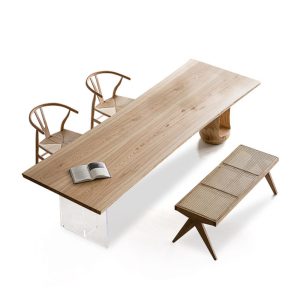You’re facing a fundamental design challenge when your kitchen lacks adequate square footage for comfortable dining. The right table set doesn’t just occupy space—it transforms spatial perception through strategic proportions, material choices, and functional integration. Professional designers understand that cramped kitchens require furniture that serves multiple purposes while maintaining visual lightness. Your selection process demands careful consideration of traffic flow, sight lines, and proportional relationships. There’s a specific methodology to achieving this transformation that most homeowners overlook entirely.
Space-Saving Dining Sets That Maximize Your Kitchen’s Potential
When square footage becomes your primary constraint, strategic furniture selection transforms spatial limitations into functional design opportunities. You’ll maximize efficiency by selecting a compact dining table set with integrated storage compartments or stackable seating elements. Drop-leaf configurations expand surface area when needed, then fold compactly against walls. Round pedestal designs eliminate corner dead zones while accommodating flexible seating arrangements. Counter-height dining table sets create visual continuity with existing cabinetry, establishing seamless flow throughout your kitchen workspace. Consider nesting chairs that tuck completely beneath tables, freeing valuable floor area for daily circulation patterns and cooking activities.

Multi-Functional Tables That Double as Storage and Workspace
Beyond traditional dining functionality, sophisticated table designs integrate seamless storage solutions and adaptable work surfaces that’ll revolutionize your kitchen’s operational capacity. You’ll discover tables featuring built-in drawers, concealed compartments, and lift-top mechanisms that accommodate everything from linens to cookware. Extendable surfaces provide additional prep space when you’re cooking, then retract for intimate dining experiences. Consider pedestal bases with integrated shelving or benches with hidden storage compartments. These engineered solutions optimize vertical and horizontal space utilization while maintaining aesthetic coherence. Smart design elements like cable management systems and fold-out laptop trays transform your dining area into a versatile command center.
Choosing the Perfect Size and Shape for Your Kitchen Layout
While multi-functional features enhance your table’s utility, the fundamental dimensions and configuration must align precisely with your kitchen’s spatial parameters and traffic flow patterns. You’ll need minimum 36-inch clearances around seating areas for comfortable chair movement. Round tables optimize circulation in compact layouts, while rectangular configurations maximize seating capacity against walls. Measure your kitchen’s narrowest passages first—your table mustn’t create bottlenecks. Consider extendable designs for flexible entertaining. Square tables work exceptionally well in galley kitchens when positioned diagonally. Calculate proportional relationships: your table shouldn’t exceed two-thirds of your available floor space to maintain visual balance and functional accessibility.
Smart Styling Tips to Make Your Small Kitchen Feel Spacious
Proper spatial proportions establish your foundation, but strategic visual techniques amplify your kitchen’s perceived square footage dramatically. You’ll maximize light reflection by selecting glass-top tables with metallic bases—chrome or polished steel creates continuous sightlines. Position your dining set perpendicular to windows, allowing natural illumination to flow unobstructed throughout the space. Choose chairs with open backs rather than solid upholstery; they’ll maintain visual transparency while preserving functionality. Implement vertical storage solutions above your table area, drawing eyes upward to emphasize ceiling height. Light-colored surfaces—whites, creams, or pale grays—expand perceived boundaries through enhanced light distribution and reduced visual weight.